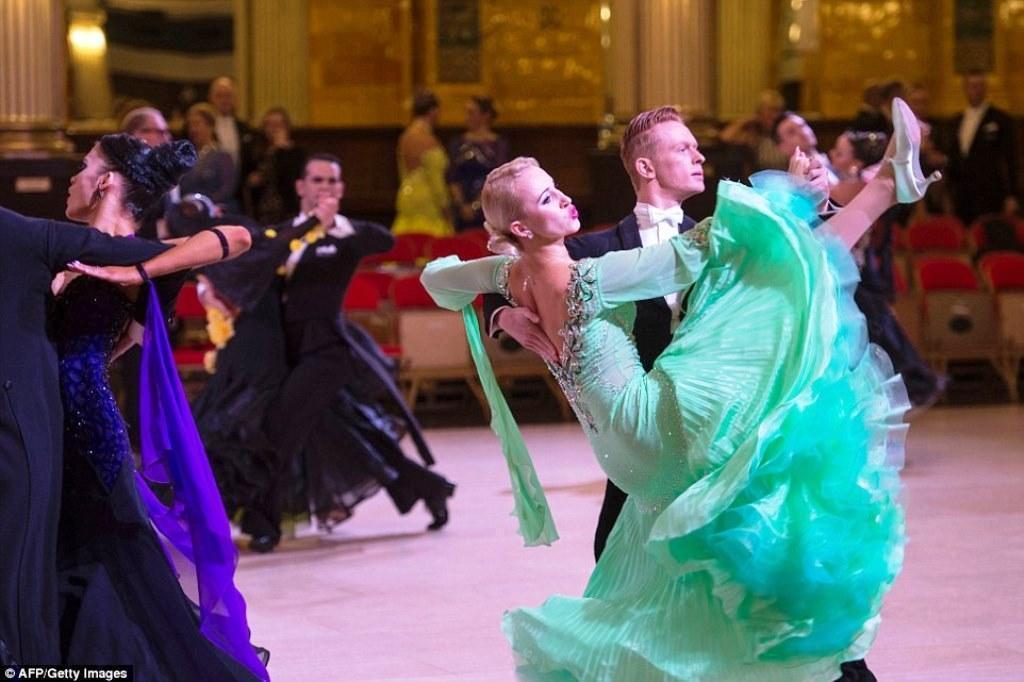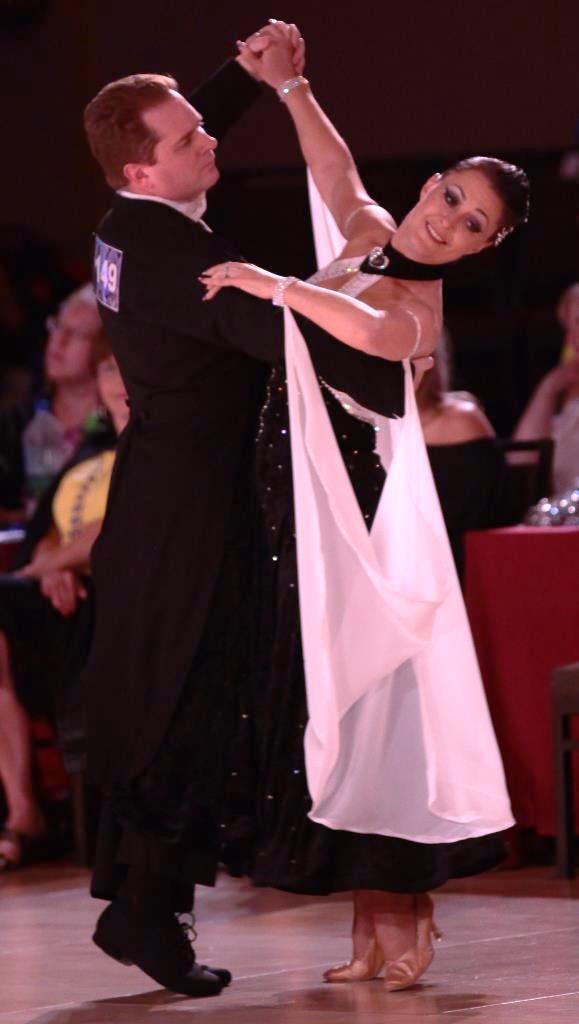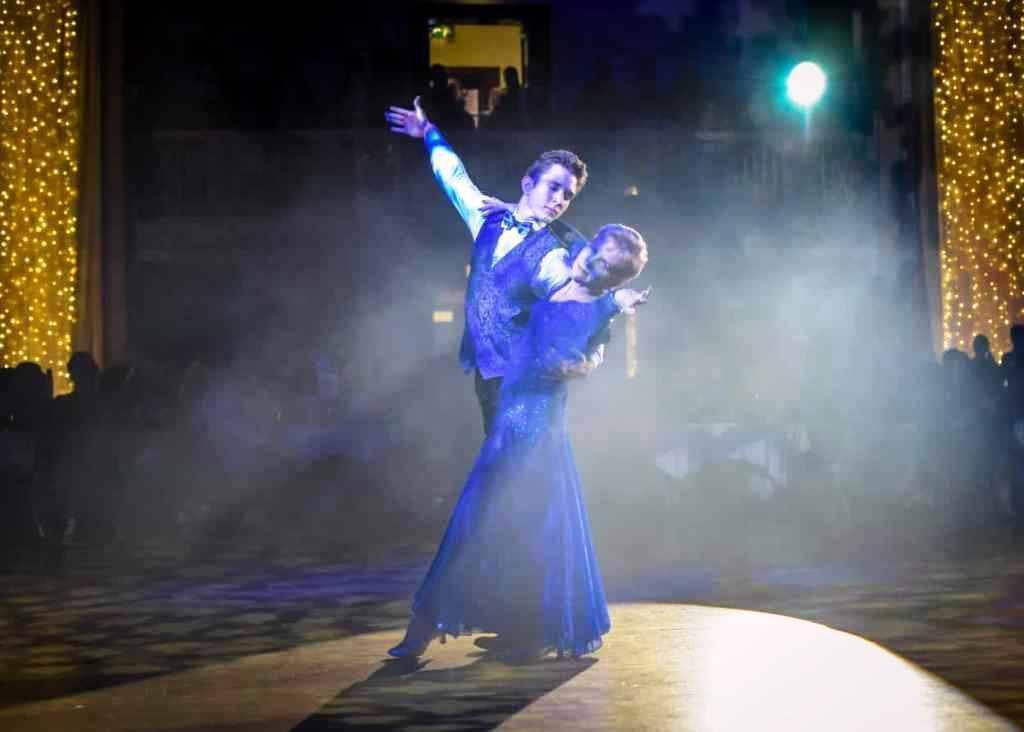
1. Introduction: Exploring the Origins of Ballroom Dance in the UK
Introduction: Exploring the Origins of Ballroom Dance in the UK
The UK has a long and fascinating history of ballroom dancing, with its roots stretching back hundreds of years. While the exact origins of the dance form are difficult to determine, it is believed to have been popularised in the late 19th century as a form of social entertainment. Over the years, ballroom dancing has evolved and developed in the UK, with a variety of different styles and techniques emerging.
In this article, we’ll be exploring the history of ballroom dancing in the UK, from its earliest days to the present day. We’ll look at the different styles of dance, the evolution of the steps and the various influences that have shaped the form. We’ll also look at how ballroom dancing has been embraced in the UK and its impact on the culture and national identity.
The Early Days of Ballroom Dance in the UK
The earliest known records of ballroom dancing in the UK date back to the early 16th century. At this time, ballroom dancing was known as ‘courtly dancing’ and was popular among the upper classes. During this period, the most popular dances included the minuet, the pavane and the galliard.
In the 18th century, the ballroom dance form began to evolve and develop, with the introduction of new steps and styles. By the 19th century, ballroom dancing had become a popular form of social entertainment, with many people attending dances in their local area. During this period, the popular dances included the waltz, the foxtrot and the polka.
The Evolution of Ballroom Dance in the UK
In the 20th century, ballroom dancing continued to evolve and develop in the UK. New styles and techniques were introduced, such as the quickstep, the tango and the Viennese waltz. In addition, the development of the Latin American dances saw the introduction of the cha-cha, the rumba and the samba.
In recent years, ballroom dancing has become even more popular in the UK, with competitions and shows being held across the country. The form has also been embraced by the younger generations, with many young people taking up the activity as a way to stay fit and have fun.
The Impact of Ballroom Dance in the UK
The popularity of ballroom dancing in the UK has had a significant impact on the culture and national identity. It has become a symbol of British culture, with many people associating the activity with the country’s history and traditions. In addition, the form has also helped to bring people together, with dancers from all walks of life coming together to enjoy the activity.
In conclusion, ballroom dancing has been a popular form of entertainment in the UK for centuries. It has evolved and developed over the years, with a variety of different styles and techniques emerging. The form has also had a significant impact on the culture and national identity of the country, with many people associating it with the history and traditions of the nation.
2. History of Ballroom Dance in Britain
History of Ballroom Dance in Britain
Ballroom dancing has been popular in Britain since the 16th century. It was during this period that the English court began to take an interest in the art of dancing, and it soon became fashionable among the upper classes. As the popularity of ballroom dancing grew, so did the number of dances that were created.
The Minuet
One of the earliest recorded ballroom dances was the minuet, which was popular in the 17th and 18th centuries. The minuet was a very formal and structured dance that was often performed in a line. It was a popular dance in the courts of Europe during this period, and it was often used to entertain guests at social events.
The Waltz
The waltz was introduced to Britain in the early 19th century. It was originally a folk dance from Germany, and it quickly gained popularity in Britain. The waltz was a much more romantic and intimate dance than the minuet, and it was often seen as a way for couples to express their love for each other.
The Foxtrot
The foxtrot was developed in the early 20th century by Harry Fox, an American dancer. It was a combination of the waltz and the two-step, and it was much faster and more energetic than the other dances of the time. The foxtrot was the first dance to be performed in public, and it quickly became popular in Britain.
Modern Ballroom Dance
In the late 20th century, ballroom dancing began to evolve. New dances were developed, such as the tango, salsa, and swing. These dances were faster and more energetic than the traditional dances, and they allowed for more freedom of movement.
Today, ballroom dancing is still popular in Britain, with many people taking part in competitions and social events. There are many different styles of ballroom dancing, ranging from the traditional waltz to the modern tango. Whatever your preference, there is sure to be a style of ballroom dance that you can enjoy.
3. Popular Ballroom Styles in the UK
Popular Ballroom Styles in the UK
The Waltz
The Waltz is a popular ballroom dance in the UK, and is believed to have originated in the 16th century in Germany and Austria. It is a graceful and elegant dance that has become a staple of the British ballroom dancing scene. The Waltz is a smooth, progressive dance that moves counterclockwise around the dance floor. The Waltz is usually danced to a 3/4 time signature and is a popular choice for weddings and other formal occasions.
The Foxtrot
The Foxtrot is a popular ballroom dance in the UK that originated in the early 1900s in the United States. It is a smooth, progressive dance that moves counterclockwise around the dance floor. The Foxtrot is usually danced to a 4/4 time signature and is a popular choice for social events such as dinner parties and receptions.
The Quickstep
The Quickstep is a popular ballroom dance in the UK that originated in the 1920s in the United States. It is an energetic, fast-paced dance that moves counterclockwise around the dance floor. The Quickstep is usually danced to a 4/4 time signature and is a popular choice for social events such as dinner parties and receptions.
4. How Ballroom Dance Evolved in Britain
How Ballroom Dance Evolved in Britain
The history of ballroom dancing in Britain dates back to the early 19th century. During this period, the popular forms of ballroom dance included the waltz, the quadrille, the polka and the mazurka. These dances were popularized by the upper classes and were often performed in large ballrooms.
The Waltz
The waltz was the first popular ballroom dance in Britain and was introduced in the early 1800s. It was initially considered scandalous and immoral due to its close contact between partners. However, it quickly gained popularity and was soon adopted by the upper classes.
The Quadrille
The quadrille was a popular ballroom dance in Britain in the early 19th century. It was a set of five dances, each of which had its own particular steps and figures. The quadrille was often performed in large ballrooms and was popular with the upper classes.
The Polka
The polka was introduced to Britain in the mid-19th century and quickly gained popularity. It was a lively dance that was often performed in large ballrooms and was popular with the upper classes.
The Mazurka
The mazurka was introduced to Britain in the late 19th century and quickly gained popularity. It was a lively dance that was often performed in large ballrooms and was popular with the upper classes.
Throughout the 19th century, ballroom dancing was popular among the upper classes in Britain and was often performed in large ballrooms. The most popular forms of ballroom dance during this period were the waltz, the quadrille, the polka and the mazurka.
5. The Impact of Ballroom Dance in the UK
The Impact of Ballroom Dance in the UK
Ballroom dancing has been a popular pastime in the UK for centuries and has had a major impact on the culture and society of the nation. The influence of ballroom can be seen in many aspects of British life, from the way people dress and interact socially to the way the country celebrates and commemorates its history.
The Social Impact of Ballroom
Ballroom dancing has had a major influence on the way people socialise in the UK. It has been a popular pastime for centuries and continues to be so today. Ballroom dancing provides an opportunity for people to come together and interact with each other in a fun and relaxed atmosphere. It also provides a great way to meet new people and make new friends.
The Cultural Impact of Ballroom
Ballroom dancing has had a significant influence on British culture. It has helped to shape the way people dress, interact with each other, and express themselves. The style of dress associated with ballroom dancing has become a popular fashion trend in the UK, with many people wearing ballroom-style clothing for special occasions.
The Historical Impact of Ballroom
Ballroom dancing has been an important part of British history for centuries. It has been used to commemorate important events such as coronations, royal weddings, and anniversaries. It has also been used to celebrate national holidays and other special occasions.
The Economic Impact of Ballroom
Ballroom dancing has had a major impact on the UK economy. The industry has grown significantly over the years and now generates millions of pounds in revenue each year. The industry employs thousands of people and is a major contributor to the British economy.
The Future of Ballroom in the UK
Ballroom dancing is likely to remain popular in the UK for many years to come. It is an important part of British culture and a great way for people to socialise and have fun. As the industry continues to grow, it is likely to have an even greater impact on the UK economy and culture in the future.
6. Conclusion: The Enduring Legacy of Ballroom Dance in the UK
Conclusion: The Enduring Legacy of Ballroom Dance in the UK
Ballroom dance has been a part of the cultural landscape of the UK for centuries. From its origins in the 16th century, it has been a popular form of entertainment and social activity. Today, ballroom dance remains popular, with classes and competitions taking place all over the country.
The UK has a rich and varied ballroom dancing culture, with many different styles and traditions. From the traditional waltz and foxtrot to the more modern Latin dances, there is something for everyone. Ballroom dancing is a great way to make new friends, get fit, and experience a unique form of entertainment.
The legacy of ballroom dance in the UK is one that will continue to be enjoyed for many years to come. Whether you’re a beginner or a more experienced dancer, the UK has something for everyone. So, why not give it a try?
References
[1] “The History of Ballroom Dance”, DanceSafe, https://www.dancesafe.org/history-of-ballroom-dance/.
[2] “Ballroom Dancing: A Brief History”, Dance Vision, https://www.dancevision.com/ballroom-dancing-brief-history/.
[3] “Ballroom Dancing”, British Dance Council, https://www.britishdancecouncil.co.uk/ballroom-dancing.php.




